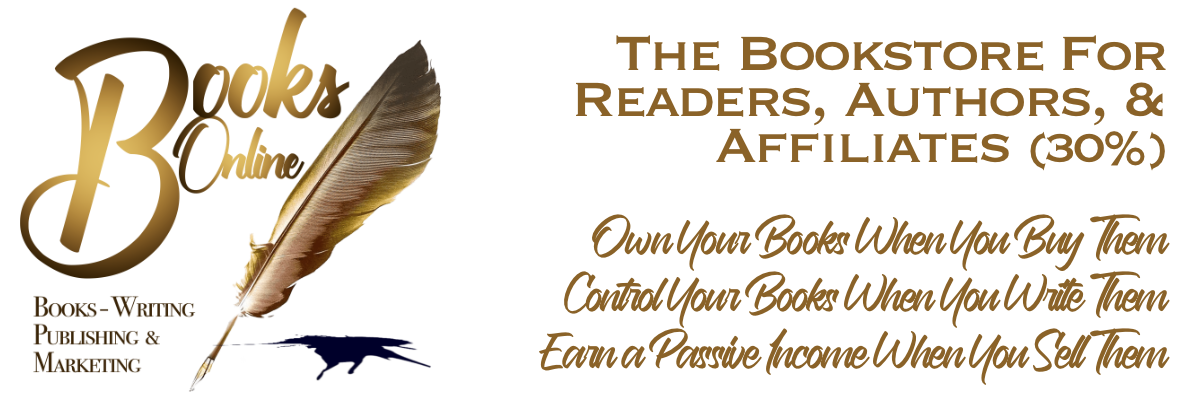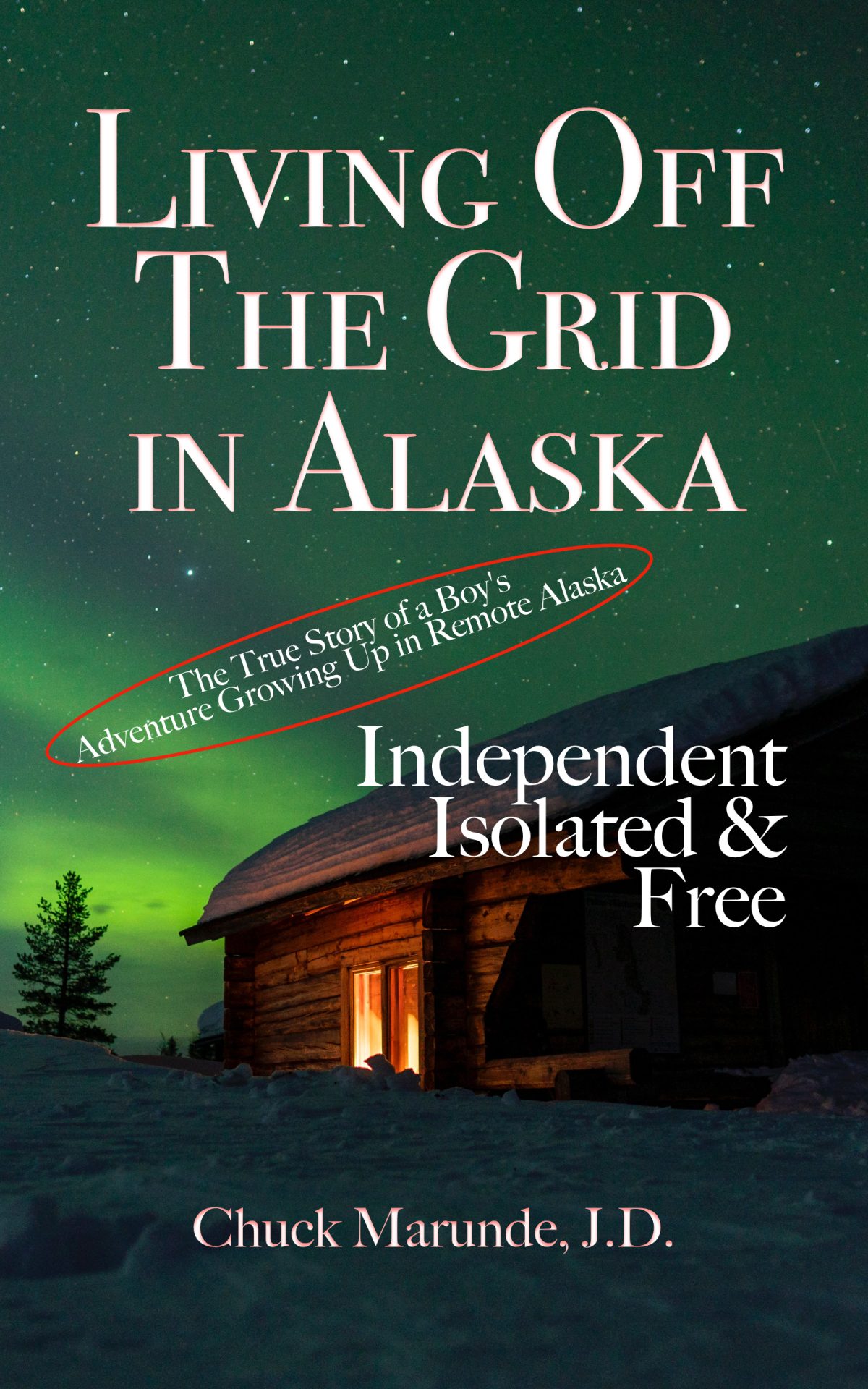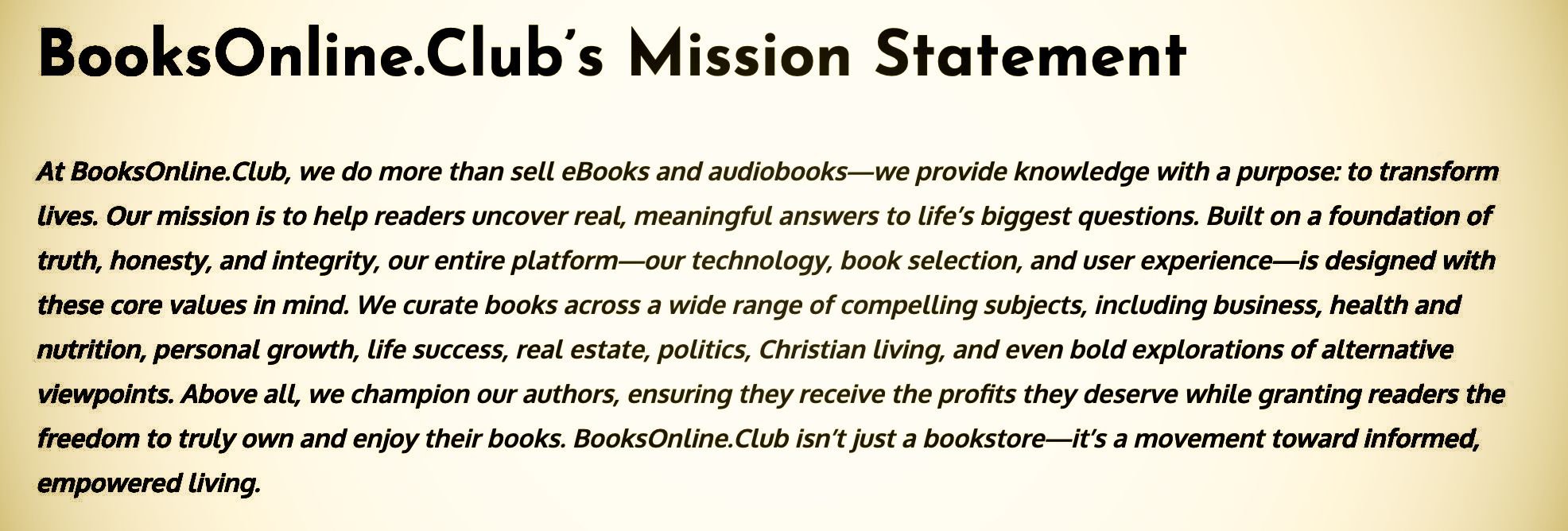
Why Everyone Will Eventually Abandon Paperbacks for eBooks and Audiobooks
Why will everyone eventually abandon paperbacks for eBooks and audiobooks? The answer is a combination of market forces and consumer preferences that lead readers to digital books and push authors away from the Amazon print model. In the present reality this is the classic example of what it means to be stuck between a rock and a hard place, and whether consumers like it or not, they will find themselves overwhelmingly persuaded that it is wiser to go digital with their reading rather than continue to pay high prices for books with shipping costs that are more than the price of the book. Likewise authors will find themselves financially pushed into digital and away from print just to survive, and to have any kind of viable business model as an author. Since Amazon is the largest book seller in the U.S. market, and could be said to be the elephant in the room, it only makes sense to analyze this dilemma with Amazon’s business model in mind.
First, I’ll breakdown the way Amazon’s model works for authors. Second, I’ll explain how Amazon’s model will determine the path of consumer demand for various book formats in the coming months and years. Third, I’ll share a rather surprising and new solution for both authors and readers.
Here’s what the distribution of book sales among the main formats looks like:
- eBook sales make up 11% of total book sales.
- Audiobooks make up 9% of total book sales.
- Paperbacks + Hardcovers make up 80% of total book sales.
Retail Book Volume is Staggering
eBooks: eBook sales have shown fluctuations but maintain a significant market presence.
- In 2020, 191 million eBooks were sold in the United States.
– eBook sales generated $1 billion in revenue in 2022. - In September 2024, eBook revenues rose by 4.0% compared to September 2023, totaling $90.5 million and accounting for 9.9% of total trade sales (just for the month of September)
Audiobooks: Audiobooks have experienced substantial growth.
- Audiobook sales in the U.S. generated over $1.81 billion in revenue in 2022.
- Audiobook revenue grew by 9% to $2 billion in 2023.
- Audiobooks now make up 9% of all book sales in the U.S. as of 2022.
Print Books: Print books, including paperbacks and hardcovers, continue to lead the market.
- In 2023, print book sales amounted to 767 million units in the U.S.
- Paperback and mass market books generated $3.48 billion in revenue in 2022.
- Hardcover books accounted for $3.2 billion in revenue in 2022.
Market Trends
- Print books outsell eBooks by a ratio of 4 to 1.
- Audiobook revenue surpassed eBook revenue for the first time in 2019, and the gap continues to grow.
- Fiction remains the top category for audiobooks, accounting for 64% of sales revenue.
Some estimates have paperbacks with 70% of the U.S. market. Clearly most readers prefer paperbacks over eBooks or audiobooks by a wide margin. But things are about to change dramatically.
Self-Publishing Impact: Platforms like Kindle Unlimited (monthly reading subscription service for $11.99) have a substantial, yet often underreported, impact on the eBook market. In 2024, Kindle Unlimited was on track to pay out approximately $620 million in royalties, indicating significant revenue streams outside traditional publishing channels. That’s a phenomenal amount of money paid out in royalties just for Kindle Unlimited (not counting royalties on eBook sales), but it is especially noteworthy here because Amazon keeps the vast majority of the sales price of all books. Imagine how much you as an author are not depositing in your bank account because you give most of your book revenue to Amazon!
Take a look at these estimates of Amazon book sales revenue. What if a book distributor could offer you a piece of the action for the retail sales of your books? It’s a massively large income opportunity! More about that later. First, it’s important to understand what the status quo is before you realize you need a new business model.

How Does This Work Out For Authors?
Let’s use a real example of a book I sell on Amazon as a paperback. The title of the book is The Most Important Questions of Your Life. The retail paperback price is $5.99, the printing cost is $2.30, shipping and handling is $3.59, and tax is $.21. So this is what a consumer will be charged:
$5.99 (book) + $3.59 (shipping) + $0.21 (tax) = $9.79
Here’s the royalty breakdown (via Amazon distribution)
- Amazon keeps 50% of the retail price: 50% of $5.99 = $2.995 (Amazon’s share)
- Remaining 50% before printing: $5.99 – $2.995 = $3.00 (rounded)
- Minus printing cost: $3.00 – $2.30 = $0.70
- Author Royalty: $0.70 per copy
Let’s consider what happened here. The author spent years acquiring the knowledge of the subject and years learning how to write articulately to reach his audience, and only makes a profit of 70 cents per sale. Meanwhile Amazon makes a profit of $3.00 rounded off. Amazon takes 50% of the retail price for their profit, and Amazon takes the full printing cost out of the author’s 50%. In other words, Amazon makes $3.00 off each sale of this book while the author only makes 70 cents.
Of course, Amazon argues that they have expenses, and they recently justified reducing authors’ royalties from 60% to 50% based on their increased costs of doing business (and the costs of Bezos’ next yacht). But authors also have something called “the cost of doing business.” An author has an office, perhaps a home office, equipment, computer hardware and expensive software, online sites he has to pay for and maintain, marketing he pays for to promote his book, which may include Amazon ads, and he has taxes to pay and plenty of stress to deal with all the business details of writing, publishing, and marketing his books.
Listening to Amazon whine about how they have to increase their profits by reducing authors’ profits is a little like a billionaire whining about the cost of candy. Oh wait! Bezos is a billionaire, and Amazon is now capitalized at over $2 trillion dollars. Perhaps as an author you would like to make some more sacrifices to help Amazon?
What Does All This Means For Authors of Print Books?
There is no affordable print-on-demand service for authors. They all charge even more than Amazon and consumers with a Prime membership at Amazon get free shipping. For consumers Amazon is the cheapest place to buy print books. But Amazon is driving prices on print books up and up and up. Their recent announcement that they were reducing author’s royalty to 50% from 60% on paperbacks caused tens of thousands of authors to quickly edit and increase their paperback prices, because at only 50% many of those books were suddenly under water, meaning they were priced below cost, and that doesn’t work. This pushed paperback prices up dramatically, and consumers are quite sensitive to price increases. It’s hard enough selling a small paperback with 80 pages at $5.99 (which was about break even for an author) when suddenly you have to increase it by $1 to $2 to make even a tiny profit. So authors are going to say, “Why bother with paperbacks?”
Don’t forget that the cost of physical products keeps going up, and that has definitely been the case for paperbacks and hardcovers. If you’re concerned about the environment, then you certainly don’t want millions of trees cut down to produce paper, not to mention all the pollution that is generated with sawmills, paper mills, and the trucking and railroad industries that transport all that timber and paper. The cost of timber and paper will surely continue to go up, and the cost of operating printing presses and the ink and glue necessary to hold books together will continue to go up. Meanwhile, eBooks and audiobooks have none of those costs.
Almost in passing, I must mention another huge downside to paperbacks and hardcovers. They take up space on bookshelves in homes, public libraries, and at Universities. Many will say, “Well, I love my bookshelves full of books, and I’ve always loved going to the local public library.” Granted, there are many who will wax eloquent about tradition and fond memories. But homeowners no longer build a den with built-in bookshelves anymore because it is getting very expensive to build a home with the cost of building now being measured per square foot. At $400 per square foot, a 600 square foot den would add $240,000 to the cost of a home. That breaks the bank for most retirees today. Libraries and Universities are struggling with finances and having trouble meeting their budgets. Imagine how much a University could cut out of their budget if they didn’t have that 20,000 square foot 2-story library building in the center of the campus! Digital products literally eliminate the need for any physical library anywhere. This is another market force that will be pushing both authors and readers to eBooks and audiobooks.
What Does All This Means For Authors of eBooks?
Authors are clearly motivated to abandon print versions in favor of eBook and audiobook versions. Amazon (with KDP for eBooks) and Amazon (with ACX for audiobooks) also take way too much of the author’s royalties. If your eBook is priced above $9.99, Amazon only pays authors a 35% royalty. They will pay 70% if your eBook is priced between $2.99 and up to and including $9.99. But if your book is worth more than $9.99, it makes no sense to price it where it should be. At only 35%, your eBook has to be priced above $19.50 to give you a royalty above an eBook priced at $9.99 and earning 70%. In other words, you lose money if you price your eBook from $9.99 to $19.50. That makes no sense at all, but Amazon’s business model isn’t built for authors or consumers–it’s built to maximize Amazon’s profits above all else. This means for most books, authors only earn 35% on their Amazon eBooks, because the vast majority of eBooks are priced below $9.99.
What Does This Mean For Authors of Audiobooks?
Amazon (through ACX) takes 75% of the retail price of audiobooks if you want to have the right to sell your audiobooks at other outlets. If you give Amazon an exclusive right to be the only distributor of your audiobook, they give you 45%. Since there are no print costs or shipping costs, these profits are much bigger as a percentage of the retail price. Even so, you can see how greedy Amazon has gotten by only paying authors 45% or 25%. Most authors are going to want to distribute their audiobooks with other outlets, so that means 25%.
What Does All This Means For Readers?
Supply and demand is still a solid economic formula, and that means readers are sensitive to book prices, and the more expensive paperbacks get, the less they will buy them. With the increased prices in paperbacks and the increases in shipping costs, paperbacks are just getting too expensive for a lot of readers. More and more readers are turning to eBooks and audiobooks, because they are much more affordable. As more readers get comfortable with eBook readers, the momentum in that direction will increase.
Take a paperback today that is $14.97 on Amazon. Even today most readers have to pause to consider whether they should buy it at all at that price. But suppose you’re in the year 2035 and this same paperback is $100, and Amazon notifies all authors that their royalty on paperbacks has been reduced again to only 5%. At some price point, probably long before $100 for this paperback, consumers will reach their threshold of pain, and they won’t pay ridiculous prices for paperbacks anymore. Instead, they will gradually move into eBooks or audiobooks, because that same book in an eBook or audiobook format could still be priced at $14.97 and be profitable. The cost of digital storage and digital transacting are going down, not up.
What is The Solution For Authors?
Clearly the solution for authors is to focus on eBooks and audiobooks because they can earn more profit and keep the price down for readers. Cover art and interior images with color come at no cost for eBooks, which is a huge benefit. But authors (and readers) are also searching for ways to get free of Amazon’s stranglehold, from their proprietary DRM (digital rights management), sleight-of-hand promotion schemes that automatically lock you into an exclusive license with Amazon, extreme and unfair limits on author options, and the restrictions they place on readers’ ownership and use of an eBook. Most of all, authors are weary of the way Amazon controls eBook pricing and dictates what an author’s profit will be.
BooksOnline and an Affiliate Marketing Program Are
Incredible Solutions for Authors and Readers
BooksOnline.Club publishes and distributes eBooks and audiobooks, and offers authors a far superior royalty plan, and an amazing marketing system via our Affiliate Marketing Program, which gives anyone the right to sell your books and earn a 30% affiliate fee. To learn why this makes so much sense, and why it is the solution that will help authors not only be profitable but increase their sales, here are articles and calculators that prove why authors will want to go this way:
BooksOnline.Club vs Amazon for Authors
eBook Royalty Calculator Amazon vs BooksOnline
Audiobook Royalty Calculator Amazon vs BooksOnline
The good news for authors is that you don’t have to abandon Amazon. Continue to use Amazon. Just join us at BooksOnline where you can host your eBook and audiobooks and start earning more money. You’ll want to read some of our articles for authors and for Affiliates, so you can see how BooksOnline.Club is designed for authors and readers and far surpasses Amazon in a long list of benefits.
I highly recommend the video explaining how YouTubers will want to implement the Affiliate Program to make money themselves . . . and of course, sell a lot of your books. Read the article and watch the video at:


